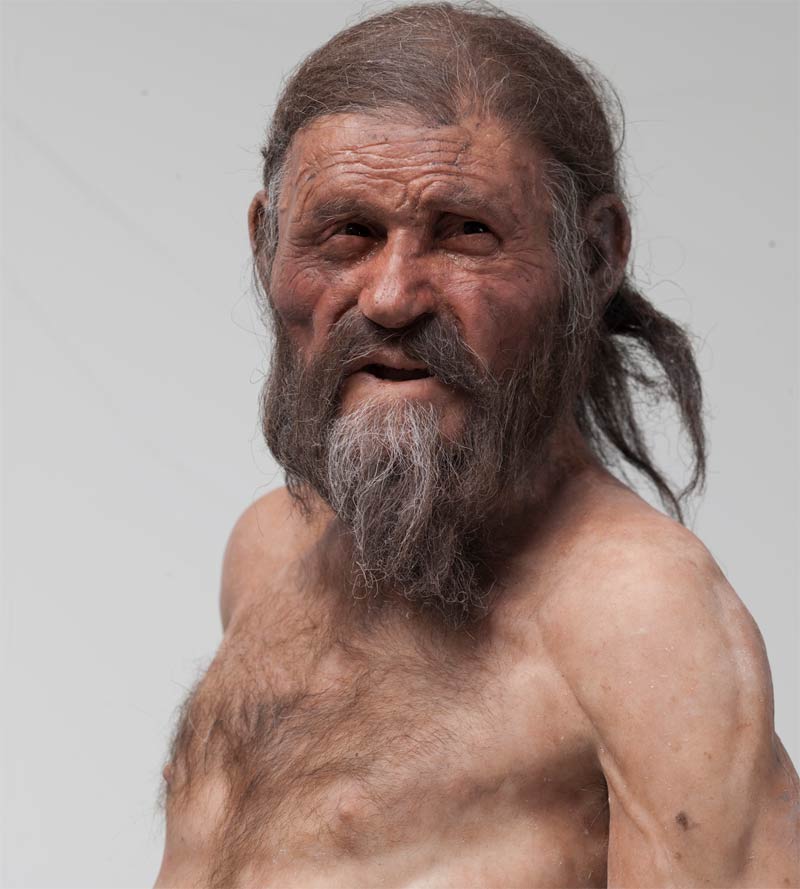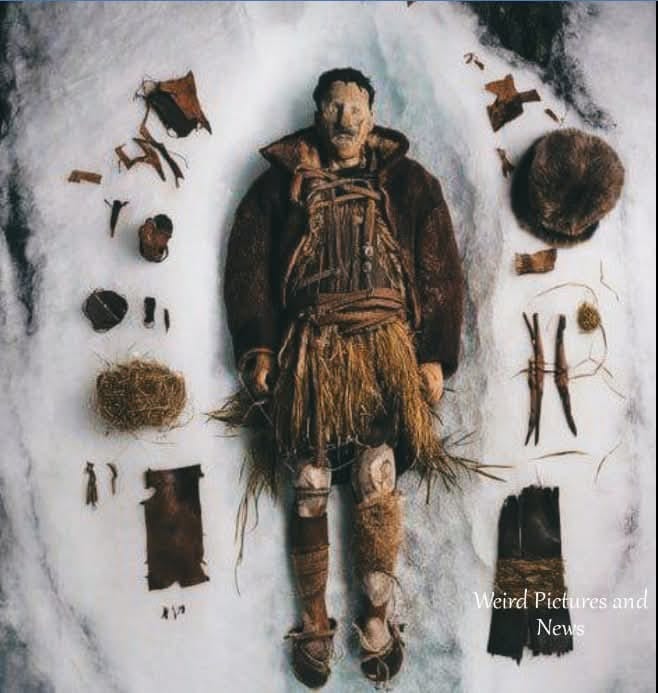Shocking Discovery in the Alps
One day in September 1991, two tourists stumbled upon a human body in the permafrost of the Ötztal Alps, on the border between Austria and Italy. They had no idea that they had just made one of the greatest archaeological discoveries of the 20th century.
The body belonged to Ötzi — the Iceman, a man who lived more than 5,300 years ago, during the Bronze Age. Miraculously, his body was almost completely preserved, thanks to the year-round cold and snow.

An autopsy showed that Ötzi did not die of cold. An arrow had pierced his left shoulder, piercing an artery and causing him to lose a lot of blood. He also had a head injury and cuts on his hands, possibly from a fight a few days before his death.
These signs suggest he was murdered, and may have been on the run before his final breath in the Alps.

The Bronze Age Man’s Carryings
A treasure trove of archaeological finds was found next to Ötzi’s body:
A pure bronze axe, indicating he belonged to a high-ranking class.
Flint knives, bows and arrows — some complete, others in the process of being crafted.
Clothes made from animal skins: a coat, leggings, belt, loincloth and bearskin hat.
Shoes stuffed with hay, great for keeping warm on the snowy journey.
A broken wooden frame — possibly the remains of a primitive backpack.
He also carried two boxes of birch bark containing charcoal and maple leaves — possibly for fire-making or medicinal purposes.
Ötzi’s stomach was so well preserved that his last meal could be analyzed: game meat, grains, fruits and vegetables. A complete diet, reflecting the ancients’ incredible survival and hunting skills.
But the most remarkable detail is the 61 tattoos scattered across his body. Created by cutting the skin and rubbing charcoal into the cuts, they are the oldest evidence of therapeutic tattooing – possibly to relieve pain, especially in degenerative areas.
Today, Ötzi is preserved in the South Tyrol Museum of Archaeology, Italy. He still wears the clothes he once wore, and has become a magical bridge between the modern world and the distant past.
Through this mummy, scientists have discovered not only how humans lived, fought and healed in prehistoric times, but also the emotions, pain and struggle for survival that transcended time.
